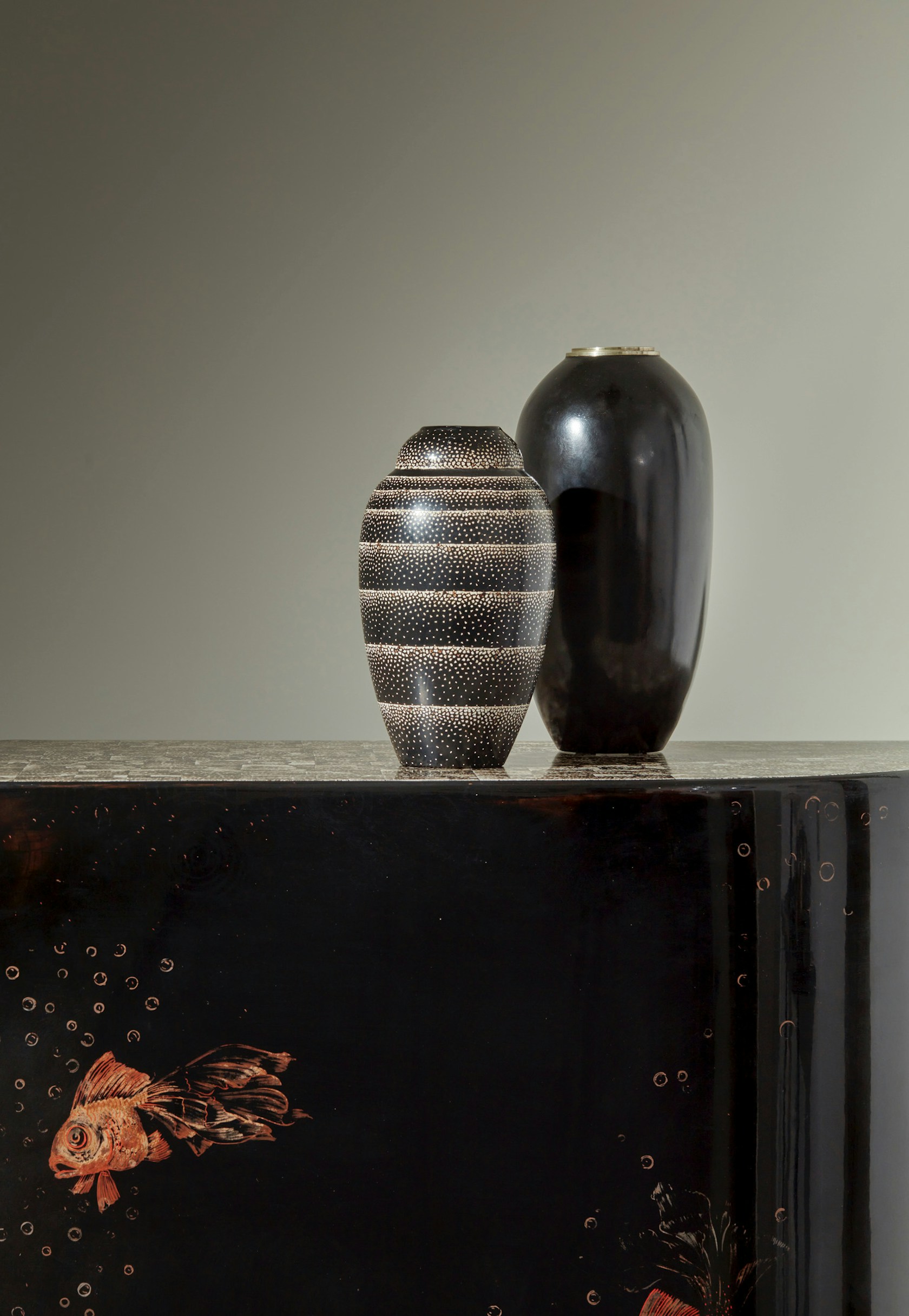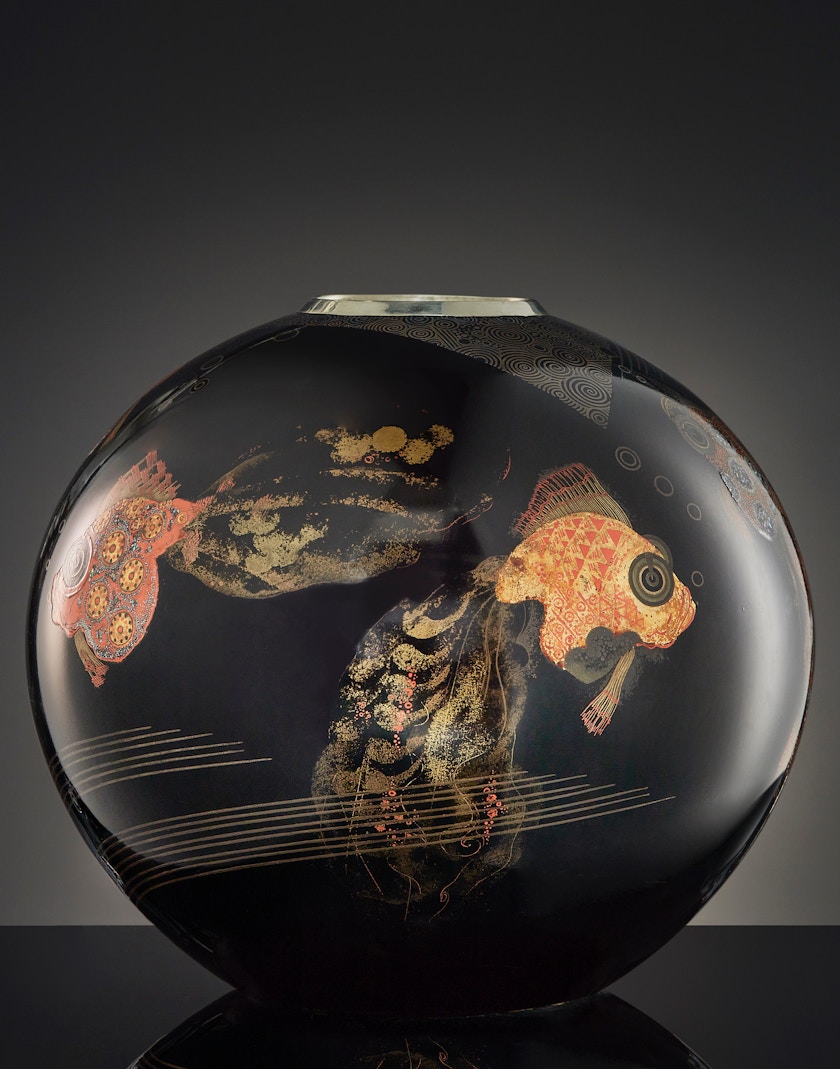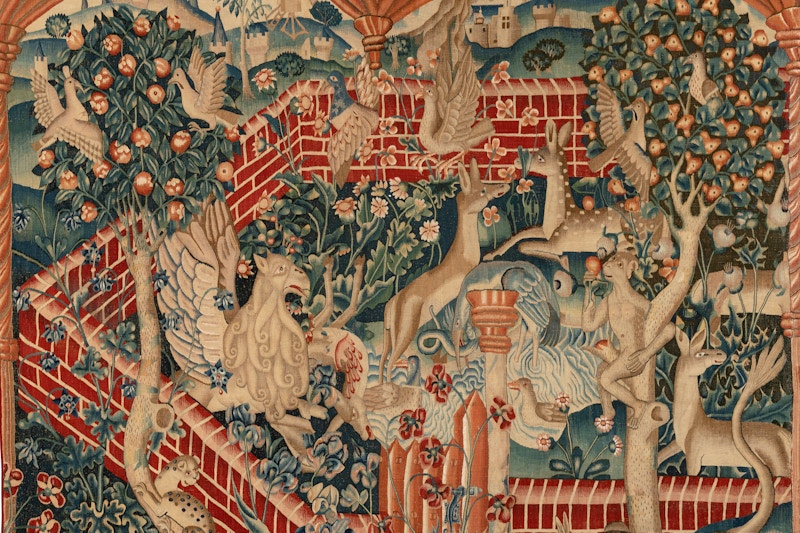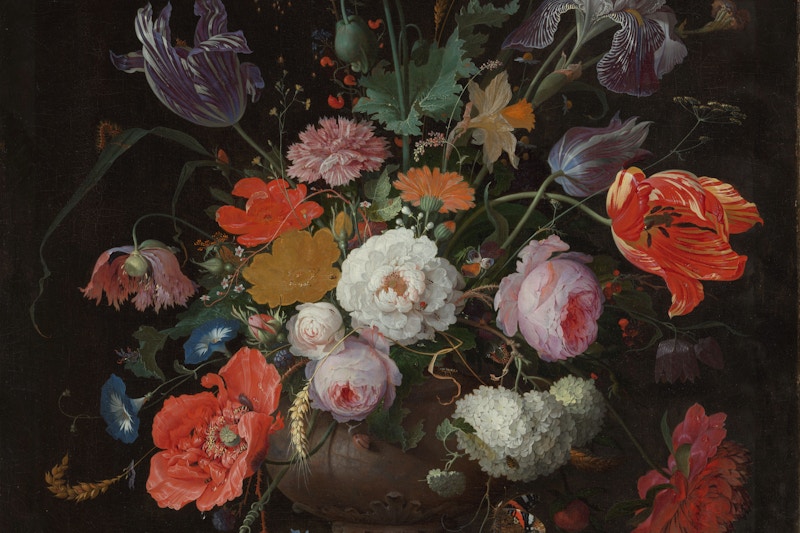
Detail of Jean Dunand’s Ovoid Vase, c. 1925. Copper decorated with a mosaic of eggshell inlay and black natural lacquer. Courtesy of Galerie Lefebvre.
How Jean Dunand Made Lacquer the Jewel of Art Deco Design
The endlessly experimental designer embraced the traditional Asian art form in captivating vases, screens, panels, textiles, and more
- By Stephanie Sporn
- Meet the Experts
In 1900, European audiences were awestruck by the Paris Exposition, which showcased the past century’s technical and cultural achievements as well as the latest innovations. Among the fair’s most popular attractions were the national pavilions, of which Japan’s towering pagoda made a particular impression. Many of the exhibition’s 50 million visitors encountered rare Japanese art and objects, from Buddhist bronzes to textiles, in person for the first time, as the country had only reopened its borders to the West a few decades prior.
No material better illustrates the pavilion’s impact on French designers than urushi, or Japanese lacquer. Though it originated in China, the Japanese practiced and perfected the painstaking and precious craft over centuries, further elevating the art form. “Beginning in the early 20th century, French artists interpreted this extremely refined lacquer work with European imagery, blending East and West into wonderful visions,” says Yana Mihailuka, Director of Galerie Lefebvre, a Paris-based gallery devoted to French works from the Art Deco period. “If you define the word ‘exquisite,’ it would be through these lacquer objects.”
While there were a handful of celebrated lacquer practitioners in Paris, such as Irish architect and furniture designer Eileen Gray and Japanese artist Katsu Hamanaka, one name has become synonymous with the medium: Jean Dunand (1877–1942). By the early 20th century, the endlessly experimental Swiss-French painter, sculptor, and designer was known as a master of dinanderie, non-precious metalwork. “Dunand was a perfect, lifelong student. He was an exceptional technician who also learned numerous art forms extremely quickly,” says Maria Clerc Baranzelli, Sales and Research Manager of Galerie Marcilhac, which specializes in 20th-century French decorative arts, in particular the work of Dunand. “He is an artist without limits.”

Detail of Jean Dunand’s Japanese Goldfish Bar, c. 1928. Black lacquered wood folding bar, silver, reddish brown, and tan lacquered fish decorations, eggshell top. Photo: Cecil Mathieu. Courtesy of Galerie Marcilhac.
Like Gray and Hamanaka, Dunand learned lacquer from Seizo Sugawara, a revered Japanese artist who additionally curated the lacquerware at his native country’s 1900 Paris Exposition pavilion. In 1905, Art Nouveau jeweler Lucien Gaillard initiated a creative exchange with the Tokyo Fine Arts School, where French and Japanese masters taught each other their crafts. While Gray became a long-time collaborator of Sugawara’s, who stayed in France for the remainder of his life, Dunand took 13 lessons from him over two months in 1912. Less than a year later, he began producing his own lacquer pieces. According to Baranzelli, “Often, Japanese artists can take ten years to learn the art of lacquer.”
By the end of World War I, lacquer had become an integral part of Dunand’s practice and one that he, like many other materials, had uniquely harnessed. “He applied it to works as if he was painting a composition, establishing a new aesthetic and vocabulary in the art of lacquer,” says Baranzelli. Combining Asian and African motifs with Cubist-like abstractions, Dunand’s fantastical hybrid imagery undoubtedly shaped Art Deco’s iconic visual vocabulary at large. He also honed avant-garde signature techniques, such as affixing small broken eggshell fragments to his lacquer since the color white could not be achieved. Demand was so high for these works that he even maintained a chicken coop in the courtyard of his workshop.

Detail of Katsu Hamanaka’s Wild Bulls, c. 1930. Four-lead folding screen executed in fine gold leaf and Japanese vegetal lacquer on wood. Courtesy of Galerie Lefebvre.
However, perhaps Dunand’s greatest asset was his entrepreneurial spirit. By modifying certain traditional lacquer techniques, he was able to speed production and significantly scale his business. This also allowed him to make many large works, such as fully paneled rooms, as opposed to the more common vases and boxes. Nevertheless, making quality lacquer is no easy feat, in particular because of the drying process, which could total six to nine months for an average-sized piece, such as his Japanese Goldfish Bar, in a European climate. “Dunand liked to explain to his clients that lacquerware was made at the speed of a snail,” says Baranzelli. As a derivative of tree sap, lacquer is very sticky and must be applied slowly in thin layers, which are sanded after drying. Each layer could take five or six days to dry, and works could be comprised of up to 40 layers—though total thickness does not exceed three or four millimeters. Humidity is paradoxically crucial for drying.
Artists can achieve a beautiful transparency and luminescence by adding layers in different colors. Baranzelli likens the “quiet power” of the effect to Mark Rothko’s Color Field paintings: “The way that the light comes through the layers creates a vibration on the surface. Even in the black objects that Dunand made, the surface does not feel uniform. There are many subtle shades that give the works a spiritual quality.”
Baranzelli further describes Dunand as “a powerful creator with an obsession for enhancing everyday objects and bringing art into everyone’s lives.” Just as he collaborated with leading decorative artists, including designer Émile-Jacques Ruhlmann and painter and enameller Jean Goulden, Dunand frequently worked with preeminent fashion designers. For the likes of Jeanne Lanvin, Madeleine Vionnet, Jean-Philippe Worth, and Elsa Schiaparelli, Dunand experimented with applying lacquer and eggshell details to garments and accessories. One of his greatest partnerships was with French milliner Madame Agnès, who asked Dunand to decorate her boutiques. “Clients would enter the store for the hats and leave with orders for Dunand,” says Baranzelli. Dunand additionally found a great promoter in legendary performer Josephine Baker for whom he designed jewelry. He displayed a folding screen and other lacquered works on stage during one of her “farewell” performances in 1928, after which Baker organized a public auction of the items.

Detail of Jean Dunand’s Ovoid Vase, c. 1925. Copper decorated with a mosaic of eggshell inlay and black natural lacquer. Courtesy of Galerie Lefebvre.

Jean Dunand, Vase with Fish, c. 1928. Lacquered metal vase with fish motif in relief, some inlaid with mother-of-pearl, gold and silver highlights, incl. copper insert. Photo: Cecil Mathieu. Courtesy of Galerie Marcilhac.
The 1920s cemented Dunand’s fame with a series of momentous projects. In 1925, the designer dazzled audiences at the International Exhibition of Modern Decorative and Industrial Arts in Paris—a key event in the history of Art Deco. Dunand contributed in several ways, though most impactful was his proposal for a fully lacquered smoking room for the French Embassy. “When the Japanese delegation visited the exhibition and saw lacquer everywhere, they were stunned by how Europeans managed to take their ancestral technique and make it their own,” says Mihailuka, adding that the ironic culture shock inspired a lacquer renaissance within Japan.
Dunand was also commissioned to design for ocean liners—his first in 1927; his most famous being the SS Normandie during the 1930s. This luxurious ship employed the finest makers of the Art Deco period to conceive its Art Deco interiors, for which Dunand designed a magnificent smoking room featuring La Conquête du cheval [The Conquest of the Horse], a set of 18 gold and color lacquer panels.
Today, Dunand’s creations feel both quintessentially Art Deco and timeless. “Many young decorators and interior designers are enthusiasts of this style because it has remained decidedly modern and adaptable,” says Baranzelli. “Lacquer in particular has such a strong presence, which is the ultimate in interior decoration. It’s like a transfixing jewel you yearn to possess.”
Copyright on works of visual artists affiliated to a CISAC organization has been arranged with Pictoright in Amsterdam. © c/o Pictoright Amsterdam 2024.


